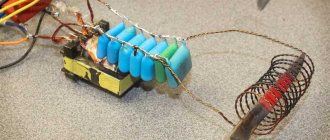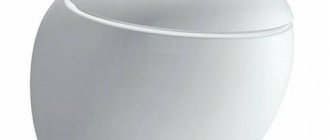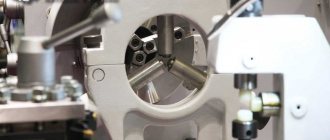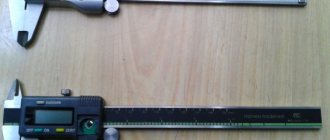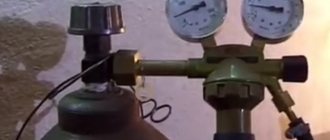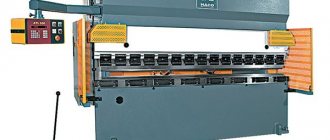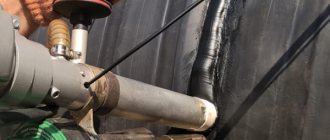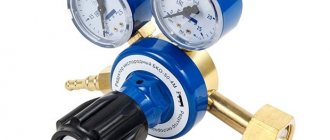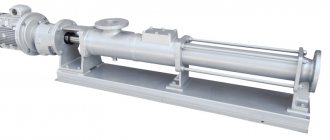Induction heating - what is it, application
Currently, the industry widely uses the method of non-contact heating of workpieces before performing various types of operations - melting, welding, soldering, forging, etc. Its efficiency is so high that it is quickly replacing traditional heating methods. Moreover, due to the peculiarities of energy transfer - without the use of a conductor - losses are minimal, and therefore the method has a high economic indicator.
Induction heating is an increase in the temperature of objects made of electrically conductive materials through the action of an alternating magnetic field in their structure. The technological essence of the procedure is as follows:
- The object that needs to be heated is placed inside an inductor - a conductor twisted in the form of a spiral.
- Next, alternating currents of high strength and different frequencies are sent to the inductor through a special generator.
- As a result, the conductor begins to emit an alternating magnetic field.
- An electrically conductive object is penetrated by this field, as a result of which induced currents arise in it.
- Under the influence of eddy currents, the temperature of the material increases.
The simplest induction heating device Source ytimg.com
This “inductor-object” circuit is essentially a transformer without a core. In it, the inductor is the primary winding, the object is the short-circuited secondary. The magnetic field flows are closed between them through the air. In powerful industrial installations, the inductor conductor itself can become very hot, so to ensure safety, a cooling system is connected to it.
The principle of induction heating is widely used in a wide variety of fields:
- Non-contact welding, melting and soldering of ultra-high purity.
- Heat treatment and bending of elements and assemblies in the automotive industry.
- Creation of experimental samples of alloys.
- Jewelry making.
- Hardening of products on the surface.
- Heat treatment of small-sized parts that are not accessible to plasma and arc.
- Heat treatment and hardening of elements of complex shapes.
- Disinfection of devices and instruments in medicine.
Instantaneous water heater is one of the most commonly used applications of induction heating in the home Source equipmaster.ru
On a note! The non-contact heating method has also found wide application in the manufacture of household heating devices, especially for water. However, in price, such models are significantly superior to traditional analogues operating on heating elements. Therefore, with sufficient experience, you can make them yourself.
Melting aluminum in induction furnaces
An induction furnace is used for melting non-ferrous and ferrous metals. Units of this operating principle are used in the following areas: from the finest jewelry making to large-scale industrial smelting of metals. This article will discuss the features of various induction furnaces.
Principle of operation
Induction heating is the basis for the operation of the furnace. In other words, electric current creates an electromagnetic field and produces heat, which is used on an industrial scale.
This law of physics is studied in the last grades of secondary school. But the concept of an electric unit and electromagnetic induction boilers should not be confused. Although the basis of work here and there is electricity.
How does this happen
The generator is connected to an alternating current source, which enters it through an inductor located inside. The capacitor is used to create an oscillation circuit, which is based on a constant operating frequency to which the system is tuned. When the voltage in the generator increases to a limit of 200 V, the inductor creates an alternating magnetic field.
The circuit is closed, most often, through a ferromagnetic alloy core. The alternating magnetic field begins to interact with the workpiece material and creates a powerful flow of electrons.
After the electrically conductive element enters into the inductive action, a residual voltage , which in the capacitor contributes to the occurrence of an eddy current.
The energy of the eddy current is converted into thermal energy of the inductor and the desired metal is heated to high melting temperatures.
The heat produced by the inductor is used:
- for melting soft and hard metals;
- for hardening the surface of metal parts (for example, tools);
- for thermal treatment of already produced parts;
- household needs (heating and cooking).
Types of devices
- Crucible induction furnaces are used to melt metals; their main principle, different from the operation of other units, is the absence of a core.
- Channel induction units are a kind of transformer that has a steel tip - a magnetic drive. The load is supplied through the secondary winding, made of one turn.
- Vacuum induction devices, in which the melting process is performed under conditions of complete vacuum, which literally draws out all impurities from the metal.
- Melting crucible furnaces are inductors for a melt mass from 5 to 200 kg with a converter based on the transistor principle.
Induction crucible furnaces
It is the most common type of induction heating furnace.
A distinctive feature that differs from other types is that an alternating magnetic field appears in it in the absence of a standard core.
A cylinder-shaped crucible is placed inside the inductor cavity . The furnace, or crucible, is made of a material that perfectly resists fire and is connected to alternating electric current.
Positive aspects
- energy is released when loading metal, there is no need to install intermediate elements;
- metal alloys consisting of several components, after completion of melting, obtain a uniform consistency and the same chemical composition in any selected volume;
- with the help of pressure regulators it is possible to carry out a reducing, oxidative or neutral process;
- medium frequencies of alternating current show high specific power values, which puts crucible furnaces among the high-performance units;
- the furnace can operate with breaks between loading metal, this will not affect subsequent melting, the transition from one type of metal to another occurs without lengthy reconfiguration of parameters;
- crucible units are easy to set to automatic control, they are simple to operate and can be easily adjusted to any of the modes;
- As a result of the process, high-quality slurries are obtained, consisting of many components, the temperature is constant and the same within the bath, and residues and waste are quickly melted, there is no overheating.
Crucible units are classified as environmentally friendly heat sources ; the environment is not polluted by metal melting.
There are disadvantages in the operation of crucible furnaces:
- during technological processing, slags at low temperatures are used;
- The produced lining of crucible furnaces has low resistance to destruction, this is most noticeable during sudden temperature changes.
The existing disadvantages do not pose any particular difficulties; the advantages of a crucible induction unit for melting metal are obvious and have made this type of device popular and in demand among a wide range of consumers.
Channel induction melting furnaces
This type is widely used in the smelting of non-ferrous metals. Effectively used for copper and copper alloys based on brass, cupronickel, bronze. Aluminum, zinc and alloys containing these metals are actively melted in channel units. The widespread use of furnaces of this type is limited due to the inability to provide a fracture-resistant lining on the inner walls of the chamber.
Molten metal in channel induction furnaces undergoes thermal and electrodynamic movement , which ensures constant uniformity of mixing of alloy components in the furnace bath.
The use of channel furnaces of the induction principle is justified in cases where special requirements are imposed on the molten metal and manufactured ingots.
The alloys are of high quality in terms of gas saturation coefficient and the presence of organic and synthetic impurities in the metal.
Channel induction furnaces operate like a mixer and are designed to level the composition, maintain a constant process temperature, and select the pouring speed into crystallizers or molds. For each alloy and casting composition, there are parameters for a special charge.
Advantages
- the alloy is heated in the lower part, to which there is no air access, which reduces evaporation from the upper surface, heated to a minimum temperature;
- channel furnaces are classified as economical induction furnaces, since the melting that occurs is ensured by a low consumption of electrical energy;
- the furnace has a high efficiency due to the use of a closed loop magnetic wire;
- Constant circulation of molten metal in the furnace accelerates the melting process and promotes uniform mixing of alloy components.
Flaws
- the durability of the stone internal lining decreases when high temperatures are used;
- the lining is destroyed when melting chemically aggressive alloys of bronze, tin and lead.
- when melting contaminated low-grade charge, the channels become clogged;
- the surface slag in the bath does not heat up to a high temperature, which does not allow operations to be carried out in the gap between the metal and the shelter and to melt chips and scrap;
- channel units do not tolerate interruptions in operation, which forces them to constantly store a significant amount of liquid alloy in the furnace mouth.
Complete removal of molten metal from the furnace leads to its rapid cracking. For the same reason, it is impossible to quickly change from one alloy to another ; you have to make several intermediate melts, called ballast.
Vacuum induction furnaces
This type is widely used for melting high quality steels and heat-resistant nickel, cobalt and iron alloys. The unit successfully copes with the melting of non-ferrous metals. Glass is melted in vacuum units, parts are treated at high temperatures, and single crystals are produced .
The furnace is classified as a high-frequency generator located in an inductor isolated from the external environment, passing a high-frequency current. To create a vacuum, air masses are pumped out of it.
All operations for introducing additives, loading the charge, and dispensing metal are carried out by automatic mechanisms with electrical or hydraulic control. Alloys with small admixtures of oxygen, hydrogen, nitrogen, and organics are obtained from vacuum furnaces.
The result is far superior to open induction ovens.
Heat-resistant steel from vacuum furnaces is used in tool and weapons production .
Some nickel alloys containing nickel and titanium are chemically active, and it is problematic to obtain them in other types of furnaces.
Vacuum furnaces perform metal pouring by rotating the crucible in the internal space of the casing or by rotating the chamber with a fixed furnace. Some models have an opening hole in the bottom to drain metal into an installed container.
Crucible furnaces with transistor converter
Used for limited weight non-ferrous metals. They are mobile, light in weight and can be easily moved from place to place.
The furnace package includes a high-voltage transistor converter with universal action .
Allows you to select the power recommended for connecting to the network, and, accordingly, the type of converter that is needed in this case with changing the weight parameters of the alloy.
Wood and metal processing
For melting aluminum alloys, crucible furnaces are used, heated by various types of fuel, stationary flame and electric - resistance and induction.
1. Charge materials
Primary and secondary metals and alloys, recycled alloys and master alloys are used as initial charge materials.
Primary aluminum is supplied in accordance with GOST 11069-74 in the form of pigs weighing 5, 15 and 1000 kg. For the production of aluminum alloys, aluminum grades A5, A6 and AO are usually used, and for the production of castings for highly responsible purposes, aluminum of special and high purity is used.
Secondary aluminum alloys are obtained by melting and refining scrap and waste. They are supplied in the form of pigs of various grades in accordance with GOST 1583-73.
Fresh metals. Aluminum alloys include zinc, magnesium, silicon, manganese, copper, beryllium, nickel, iron, titanium and other elements. For aluminum alloys, zinc grades Ts1 and Ts2 are usually used. Magnesium is supplied in accordance with GOST 804-72 in pigs weighing 8.0±1 kg.
Due to its high tendency to corrosion, the surface of the pigs is subjected to anti-corrosion treatment. Silicon is introduced into aluminum alloys in the form of pig silumin (an alloy of silicon with aluminum), supplied in accordance with GOST 1521-76, and manganese is introduced in the form of an aluminum-manganese alloy containing about 10% manganese.
To prepare master alloys, manganese grades Mp1, Mp2 and Mp3 are used.
The quality of castings largely depends on the thoroughness of preparation of the charge materials for smelting and the methods of their storage. They should be stored in dry, indoor areas separately by alloy grade. The recycled alloy must be cleaned of sand in cleaning drums.
Ligatures. When melting aluminum alloys, as a rule, double alloys are used - alloys of two components. The introduction of alloys ensures the production of an alloy with the exact content of elements, which is especially important for alloys containing magnesium, since even small additions affect the properties of the alloys.
The charge for preparing aluminum alloys can consist of pig aluminum, silumin, recycled metal, alloys and pure metals.
Let's consider an example of calculating the charge for the AL5 alloy when melting in a crucible furnace. The average chemical composition of this alloy is: 5% silicon, 0.4% magnesium, 1.25% copper, the rest is aluminum. The permissible iron content when pouring into metal molds should not exceed 1%. The calculation is based on 100 kg of alloy. We accept waste in the following sizes, in%: silicon - 1, magnesium - 3, copper - 1, aluminum - 1.
To bring the silicon content to the required amount, we use pig silumin (with Si = 13%), and magnesium and copper - aluminum-magnesium and aluminum-copper alloys.
3. Fluxes, refining and modifying materials
To obtain high-quality alloys, submerged arc melting, refining of the alloy to remove non-metallic inclusions, and modification to obtain a fine structure and improve mechanical properties are carried out.
For refining and modifying aluminum alloys, universal fluxes consisting of a mixture of salts and cryolite are often used. Universal fluxes are used in both liquid and powder form.
Operating principle of the heater
The mechanism for generating heat in household electrical appliances of this type is based on the same law on which industrial installations operate. However, the scheme of their work has its own characteristics. First of all, they concern the device. Thus, a household induction instantaneous water heater consists of the following main elements:
- An inductor is a coil of copper wire. When a current passes through it, a magnetic field is formed, under the influence of which the electrically conductive material of the heater is heated.
- A generator is a converter of stable household current into a high-frequency flow required in terms of power.
Operating principle of an induction water heater Source vinteplo.ru
See also: Catalog of companies that specialize in engineering systems (heating, water supply, sewerage and others) and related work
- The heating element is a metal pipe through which a water flow is passed to produce heating. The heater simultaneously functions as a cooler for the inductor, thereby providing it with stable operating characteristics and durability.
The generator converts the current from normal to high-frequency and supplies it to the coil. The wire winding produces a magnetic field. The tube heater located inside it heats up and transfers heat to the water flow passing through it. Due to the absence of direct contact during the transition from one type of energy to another, losses are minimal. The efficiency of such electric heaters reaches 98%.
Reference! An induction boiler works according to a similar scheme discussed above, which is an economical, efficient and durable heater for the home. Only instead of a tube, a heat exchange circuit is placed in the inductor, passing through which a special coolant is heated and distributed over all radiators of the living area.
Design and principle of operation of an induction boiler for heating Source oboiman.ru
Induction heaters and experiments with them
Here you are, those who like to put out footcloths, all your fingers are probably worn out with calluses. I’m even scared to write and show anything further
Okay, I'll take the risk.
I assembled a frequency meter so that I could turn the knobs in the field to adjust for resonance. Auto-tuning is not yet provided, and when using graphite crucibles, I did not notice that the frequency would drift away much. (second device in first post)
I found the diagram on the Internet and just tweaked it a little to suit my wishes. I attached a picture of the circuit, an archive with firmware and circuit in Proteus in a file archive: https://www.chipmaker...les/file/12366/
Threw it on Tyndex. https://cxem.net/izmer/izmer155.php
Pictures of what he made for collective farms……..
Now, according to reports, ivolovech look here https://radiokot.ru/f...=33151#p2244920 by last name it seems like him.
There are a number of similar devices, such as Roy https://www.fluxeon.com/Roy1200.html
https://www.neon-john...C_schematic.pdf
And something else.
While I had other tasks. I didn’t particularly repeat them. As for calculating the details, I think the guys will help you here. In theory, everything is 5 plus. Well, tell us what types of work you want to carry out with this device? Good luck with your repetition!
DRAGON - your scheme is from the topic about quality players, probably, only they made something up there, threw everything into a pile.....
This circuit is self-oscillating and adapts itself to the frequency of the circuit. I also saw something similar in this picture of an induction stove
Kawah Ijen and enomad, I practically didn’t do any calculations. My task was to adapt to a specific crucible or a specific heated material. I haven't considered a universal device yet.
Basically, for example, I took a crucible, made the height of the coil equal to the height of the crucible, and made the diameter equal to the diameter of the crucible plus a heat insulator. I understand that there are many errors in this equation, but so far it seems to be working.
I measured the inductance of the resulting coil (it can also be calculated) and calculated the frequency of the circuit at a certain capacitance
https://coil32.ru/calc/one-layer.html
https://coil32.ru/calc/jslcc.html
Well, I=U/R, P=I*U
The power adjustment, or rather the current that goes to the keys, in the first diagram of the first message was regulated by the position of the crucibles in the circuit (raised, lowered); when casting plastic, the temperature regulator worked. The coffee was brewed by itself...
In the second device, adjustment is made by raising and lowering the frequency. As many do.
The crucibles in the first device are made of iron, in the second they are graphite.
Well, about the type of circuit. in these schemes, the heating efficiency of different materials with relatively equal surface area was different. The first design heated iron wonderfully, aluminum the worst (with the same current consumption from the power supply), the second, on the contrary, heats aluminum with a bang, but iron consumes less current and heats worse.
The table is not mine, but from the Internet.
There was a question about power supplies. Return passages for anyone interested. Using this principle, you can assemble power supplies for a generator, driver, protection, measuring instruments, pumps, fans……….
https://radiokot.ru/c...r/converter/51/
Topic and programs for calculating transformers
https://radiokot.ru/f...hp?f=11&t=33756
https://radiokot.ru/c...r/converter/51/
I checked, assembled, everything works
I liked doing heat removal through copper busbars. It is advisable to avoid snot and long wires. Place capacitors on the power supply closer to the keys. For large capacities, install two switches, one charges the capacity through a resistor(s), when the maximum voltage on the capacitors is reached, turn on the second circuit breaker (this is done so that the light in the entrance panel room does not go out)
I wound the secondary turns from thick wire (wound, unwound), watched how everything behaved and then just bent the tube.
The capacitors were installed using ordinary Chinese ones from household induction stoves, on which soup and porridge are cooked. At the moment, on the first design there are 2 pcs of 0.27 µF each, on the second there are 5 pcs. 0.33 µF each Almost all the parts were cold for half an hour at 2 kW, the transformer at the output was only 40-50 degrees.
Fuuuuh, sort of. I hope I haven't deprived anyone of my attention. And I didn’t mess anything up.
But no, I remembered, books.
For those who haven’t read it, I recommend the classic about a laboratory inverter, there are several parts there. It won’t take much time, but you will learn a lot of interesting things. The same author was also involved in the levitation of aluminum (there is a video on the web and on YouTube)
https://www.icct.ru/node/79/php.htm
https://www.icct.ru/node/82
The picture below the text was already at the beginning of the message, do not pay attention to it
Modified on January 16, 2021 by user NBV(SPB) added link to сxem.net
Advantages and disadvantages
The advantages of a household water heater of this type are as follows:
- Long service life. The average warranty period for most manufacturers is 30 years. At the same time, the installation does not require serious maintenance and repair with the replacement of main elements throughout the entire period of operation. Preventative cleaning is carried out no more than once every 7-9 years.
- Economical energy consumption. To produce the same amount of heat, in comparison with varieties operating on traditional heating elements, 30-40% less energy is spent.
- No scale. The specific mechanism of operation of the device eliminates the formation of scale on the working elements of the installation. In addition, when the device is turned on, it vibrates slightly, which is also a good protective factor against the build-up of various types of deposits on its internal parts in contact with water.
- Minimal risk of leaks. Non-contact heating technology eliminates the factors of destruction - when metal elements quickly rust under the influence of heat and dampness.
An induction water heater is reliable, durable and economical Source rusolymp.ru
Metal induction heater. Principle of operation
The technology of induction heating of workpieces is in demand not only in hot stamping shops. Compact inductors are necessary, in particular, for car service centers engaged in the manufacture and repair of steel parts from profiled rolled products. Purchasing an industrial inductor is expensive. Is there an alternative?
Features of self-production
In order to make an induction heater, you must have experience in electrical work and assembling homemade electrical appliances, as well as skills in processing metal and other materials and be able to install wiring. Therefore, in their absence, it is better to entrust such work to professionals. In this case, the general algorithm for manufacturing the device consists of the following sequential stages:
- Making a heater. As a rule, a section of thick-walled metal pipe with adapters at the ends is used, enclosed in a heat-resistant plastic tube of a larger diameter.
DIY induction heater
There are a number of known designs of inductors made from a welding inverter, the operating principle of which can be used to induce Foucault eddy currents in metal.
Making a homemade inductor is as follows. First, you will need to make a durable case in which there will be a mounting unit for the heated workpiece. The case must be hardened so that it does not deform under the influence of possible impacts. It is even better if the material is subjected to nitriding: in this case, two advantages are realized - an additional increase in hardness due to a more complete transformation of retained austenite into martensite, and an improvement in the skin effect, when a more powerful current flows along the outside of the workpiece. Strength is assessed by spark test.
The next stage is the manufacture of the heating coil. It is made from individually insulated wires: in this case, power losses will be minimal. A copper tube is also suitable - it has a large surface area along which eddy currents will be induced, while the inductor’s own heating due to the high electrical conductivity of copper is practically absent.
After connecting the coil to the water cooling system and checking the pumping system, the inductor is ready for operation.
Video description
Video example of making an induction heater:
- Creation of an inductor. An insulated copper wire with a cross-section of about 1-1.5 mm2 is tightly wound around the tube. The number of turns must be at least 90.
- Selecting a suitable alternator. The simplest and most affordable way is to use an inverter from an appropriate welding unit.
- Connecting the heater with the inductor to the water supply or heating pipe.
- Connecting the inductor to the network. The contact wires from the coil are connected to the positive contacts of the inverter.
- Power supply. Rectifier diodes are installed at the terminals. Without them, the voltage of the supplied current will be supplied rectified, and the coil will function as an electromagnet rather than an inductor.
- Turning on and checking the operation of the device.
Note! A self-made heater, unlike factory-made analogues, is not equipped with a protection and control system. Therefore, before turning it on, you must make sure that the heating element is filled with water.
A few words about safety
Homemade induction boilers are usually not equipped with control and protection systems, which makes them unsafe. Therefore, before turning on the unit, you must make sure that the housing cavity is filled with coolant liquid.
If the polymer body of the heater is subjected to constant heating without being washed with coolant, it will simply melt, sometimes this leads not only to deformation of the heater, but also to its complete damage.
The loss of hot metal filler from the melted body can also be dangerous. In this case, you will have to almost completely dismantle the device and make a new heating element for it.
The connection to the power supply should be made via a separate cable from the panel. Of course, it is necessary to carefully cover all contacts with insulation. The inverter of the welding machine must also be grounded; this is an important point to ensure safety.
In this case, you will need a cable with a cross-section of at least four millimeters. Some experts recommend giving preference to a six-millimeter cable. To prevent overheating of a homemade induction heater due to a lack of water in the system, it is recommended to install an overpressure valve at the inlet of the heater.
A homemade device of this type, not equipped with special protective equipment, is a potentially dangerous object that requires constant monitoring. Therefore, it is worth spending a little more money but purchasing the necessary devices.
At the same time, it doesn’t hurt to estimate the costs; perhaps purchasing a ready-made induction boiler will not cost much more. Industrial devices are usually equipped with all the necessary protection.
Features and step-by-step manufacturing technology of another version of a homemade induction boiler for a heating system are given here.
Briefly about the main thing
Induction heating is based on the ability of an alternating magnetic field to increase the temperature of objects made of electrically conductive materials. Heating is carried out in a non-contact manner and is characterized by high performance and low energy losses. For this reason, the method is widely used in various fields - melting, welding, soldering of metals, heat treatment of components and elements in production, disinfection of instruments in medicine.
The same principle applies to the operation of a domestic water heater. The heating element through which the water passes is placed in an inductor coil. When a high-frequency current is applied, an alternating magnetic field is generated, heating the metal heater. Among the main advantages of such devices are:
- Durability.
- Economy.
- No scale.
- Leak-free operation.
- Natural convection.
Disadvantages are associated with the release of heat into the surrounding space, the need for a stable power supply, constant monitoring of performance characteristics, operating noise and harmful radiation. When manufacturing the device, you must follow the instructions and have sufficient experience.
Ratings 0
Method and technology for melting metal in an induction furnace
An induction furnace is used for melting non-ferrous and ferrous metals. Units of this operating principle are used in the following areas: from the finest jewelry making to large-scale industrial smelting of metals. This article will discuss the features of various induction furnaces.
What is the lining of induction furnaces
Its purpose is to protect the furnace casing from the destructive effects of high temperatures. A side effect is the preservation of heat, therefore, the efficiency of the process increases .
The crucible in the design of an induction furnace is made in one of the following ways:
- by the method of excavation in small-volume ovens;
- by the printed method from refractory material in the form of masonry;
- combined, combining ceramics and a buffer layer between the masonry and the indicator.
The lining is made of quartzite, corundum, graphite, fireclay graphite, magnesite. Additives are added to all these materials to improve the characteristics of the lining, reduce volume changes, improve sintering, and increase the resistance of the layer to aggressive materials.
To select a particular material for lining, a number of accompanying conditions are taken into account , namely, the type of metal, the price and refractory properties of the crucible, and the service life of the composition. A correctly selected lining composition should provide the technical requirements for the process:
- obtaining high quality ingots;
- the largest amount of full melting without repair work;
- safe work of specialists;
- stability and continuity of the smelting process;
- obtaining high-quality material using an economical amount of resources;
- use of common materials for lining at a low price;
- minimal impact on the surrounding space.
The use of induction furnaces makes it possible to obtain alloys and metals of excellent quality with a minimum content of various impurities and oxygen, which increases their use in complex production areas.
- Alexander Romanovich Chernyshov
Connection using an isolation-matching transformer
This circuit is implemented in the case when the voltage on the converter is less than the voltage on the inductor.
LLC HDTV Converter Plant has a wide geography of supplies. In particular, 12 induction units were supplied to Novosibirsk. HDTV induction units have proven themselves to be a reliable and practical unit. Induction installations for heating metal are produced with inductors for operation in a wide range of operating frequencies: from 500 Hz to 500 kHz. Induction heat treatment units are produced with Inductors with a power from 50 kW to 5 megawatts. The Novosibirsk induction installations were delivered and put into operation within one week. These HDTV induction installations have an operating frequency of the Inductor: 66 kHz. These Induction installations for heating metal produce a total power of 2000 kW on the Inductors. Five induction heat treatment units were also later installed and put into operation. Their total power on the Inductors was 500 kW.”
Connecting a Transistor Frequency Converter
The converters are designed for inductors with parallel compensation. This is realized by means of compensating the reactive power of the inductor, which is compensated by capacitors connected in parallel to it. Parallel compensation is used in all domestic induction heating installations and in most imported ones.
- Inductotherm (USA),
- SMS Eloterm (Germany)
- SMS Meer GmbH (Germany)
- Pillar Induction (USA),
- EFD Induction (Norway),
- EFD Weldac (Norway),
- Ajax Tocco Magnethermic (USA),
Therefore, installation and startup of the Frequency Converter produced by HDTV Converter Plant LLC does not require additional settings or qualifications of maintenance personnel.
The circuit design of the Semiconductor Frequency Converter PFC from HDTV Converter Plant LLC allows you to have a wide frequency tuning range.


